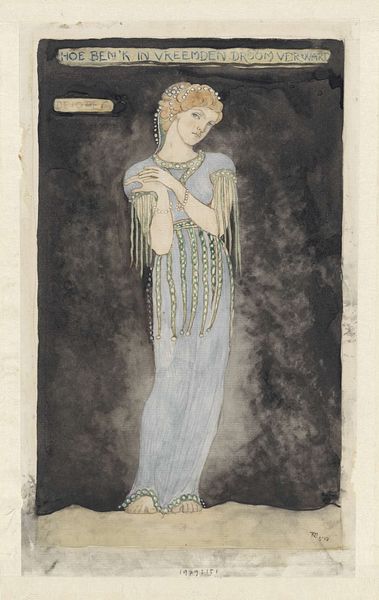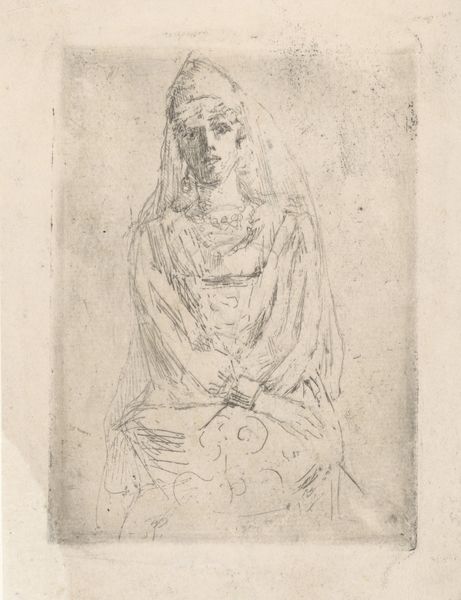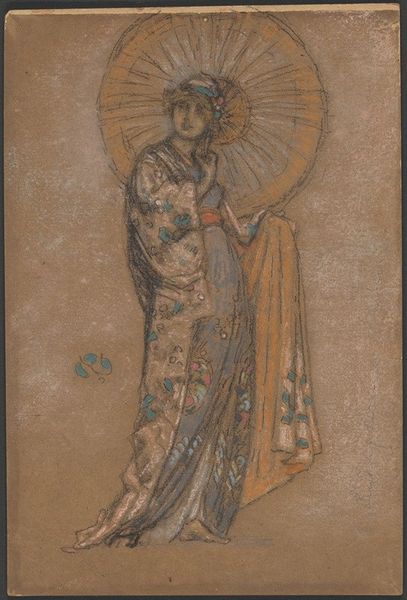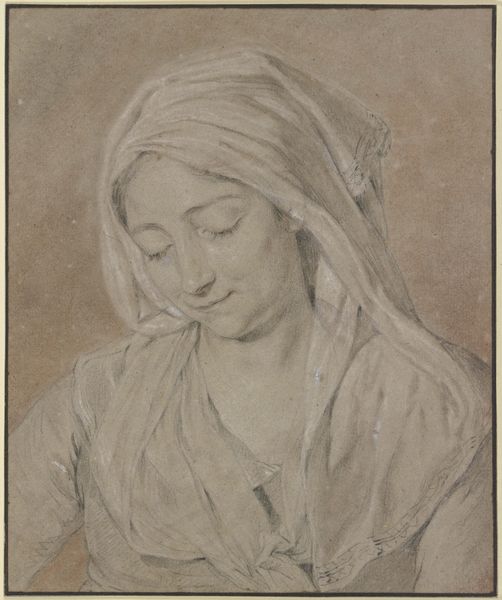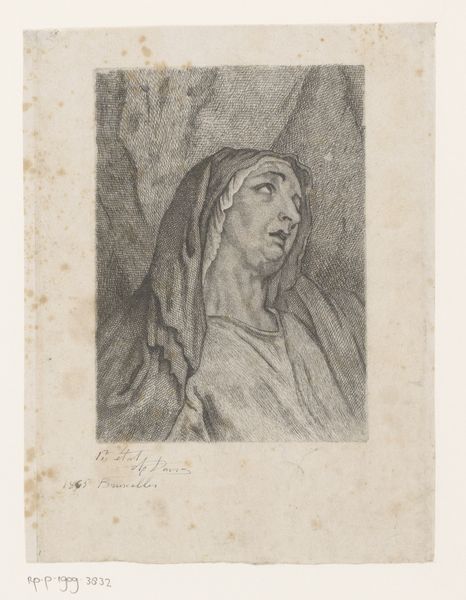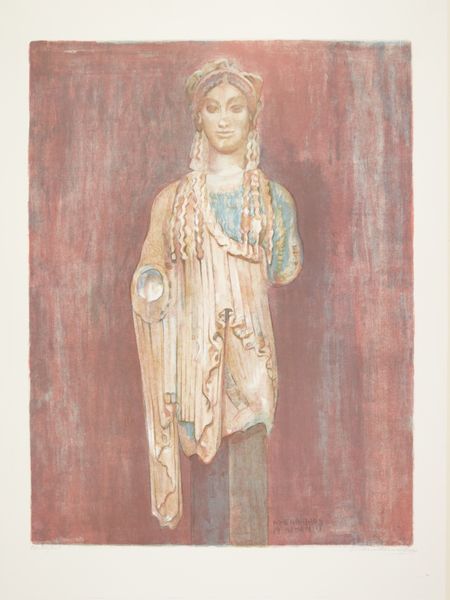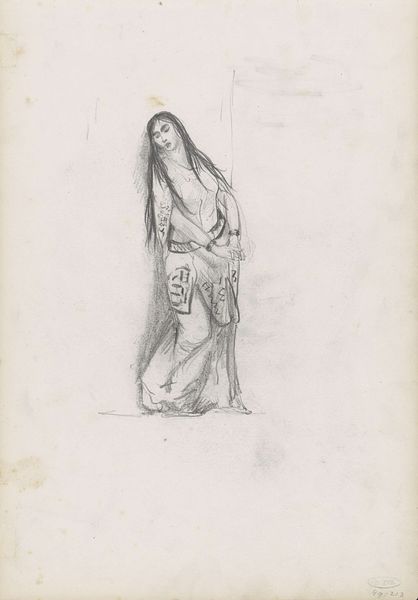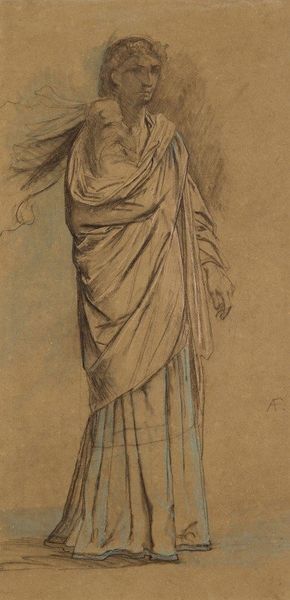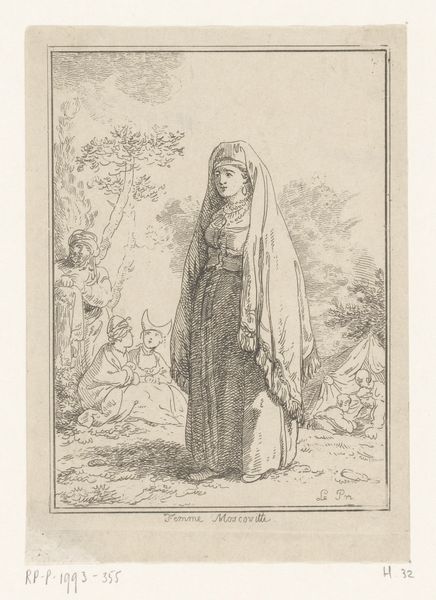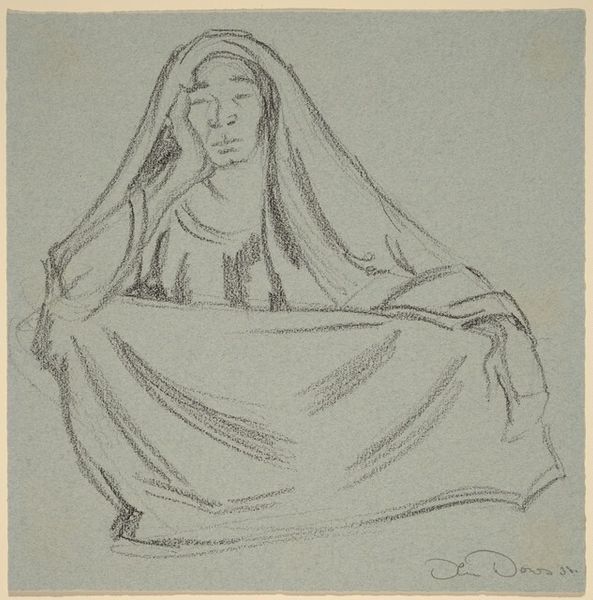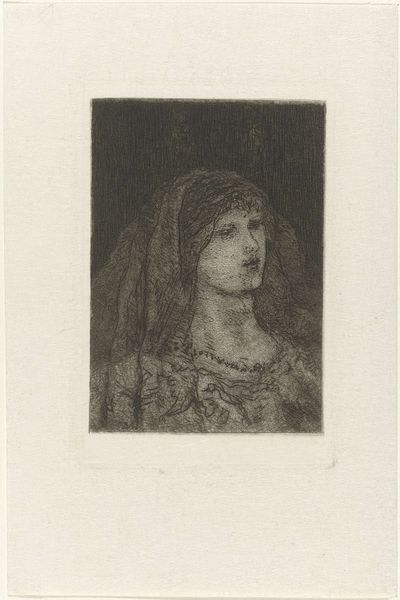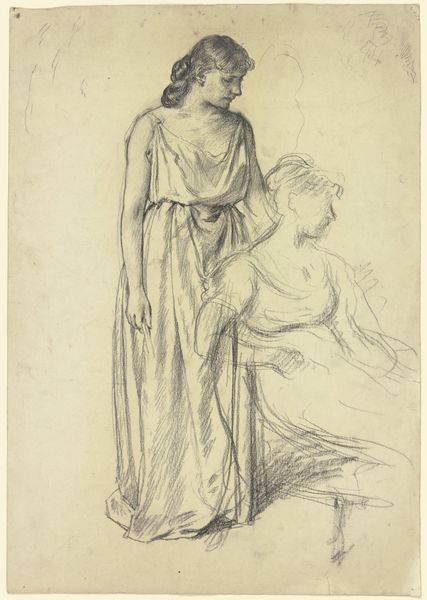
drawing, print, pencil, charcoal, pastel
#
portrait
#
drawing
# print
#
charcoal drawing
#
pencil drawing
#
pencil
#
orientalism
#
charcoal
#
pastel
#
academic-art
Dimensions: Sheet: 18 5/8 × 11 7/16 in. (47.3 × 29 cm)
Copyright: Public Domain
Curator: Ah, here we have Gustave Boulanger’s “Arab Woman," believed to have been created sometime between 1845 and 1888. It resides here with us at the Metropolitan Museum of Art. An intriguing mix of charcoal, pastel, and pencil on paper. Editor: She seems a little lost, doesn't she? I mean, literally and figuratively. A tentative melancholy, a beautiful ghost caught on paper. I wonder what was going through Boulanger’s mind… Curator: I think we can look to Boulanger’s position in the history of Orientalism to find an answer, though maybe not the "answer." He worked within an established artistic economy in France where images of the 'Orient,' or more accurately, *ideas* about the Orient, were popular and therefore, quite profitable. Note the materiality. A drawing, allowing for multiples via printmaking processes. The aim here seems to have been consumption. Editor: Consumption of an idealized image, right? She's draped and adorned just so, head covered with diaphanous veils and golden ornaments hinting at wealth and status. She's been designed, almost packaged, for Western consumption... and projection. Curator: Precisely. Consider also the technical labor. Boulanger likely relied on preliminary sketches, studio assistants, and the established conventions of academic art to produce this image. It’s easy to overlook the industrialized elements of this type of artistic creation. Editor: That melancholic mood I mentioned, though... Perhaps it’s a byproduct of the process. The distance, the layers between subject and finished product... it feels heavy, like something precious has been flattened. It is pretty though, almost impossibly, serenely so. It must have done so well. Curator: It probably did, sadly. But that tension, as you noted, is quite compelling, particularly when considered in the larger landscape of 19th-century cultural production. The blending of drawing and painting allowed a wider market reach for this vision of otherness. Editor: Exactly, the drawing allows for copies and dissemination that perpetuate or transform the myth of an idealized exoticized person. Makes one pause to reconsider such seemingly serene portrayals. Curator: An important and complex portrayal of an aesthetic and socio-economic situation that continues to invite consideration and discussion. Editor: Indeed. This work lingers in your thoughts; that’s undeniable. It does take time to grasp the full implication.
Comments
No comments
Be the first to comment and join the conversation on the ultimate creative platform.


